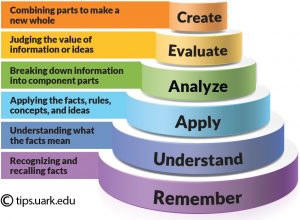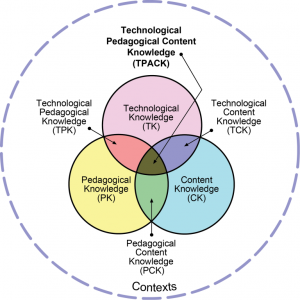 “Technology” by Sephko is licensed under CC BY-NC-ND 4.0
“Technology” by Sephko is licensed under CC BY-NC-ND 4.0



In the context of Open Educational Resources (OER’s) we are reshaping the world where access is now on a global scale.MIT Open Course ware Initiative presently has 2400 courses, with the most popular course being an Introduction to learning the coding language Python. The privacy and terms of use with all the course content allows the learner or user to download all of the course material with the ability to share and adapt the content. The adaptations allows users to modify content to best suit the needs of their community, such as a language barrier or mode of delivery. EdX is another OER platform which consists of an amalgamation from various educational institutions who provide open access to materials for auditing, but requires a fee for unlimited access to content and for the ability to receive certification.
The question then is what is the purpose of OER’s for the learner? For some the motivation may be self fulfillment and acquiring a new skill set for their own purpose. For others, there may be a need for proof of accomplishment in order to show an employer that a specific skill set has been acquired and assessed by master instructors in their field. Either way, I feel there is room for not only true OER platforms, but a hybridization of having paid content for the learner to receive the benefit of having contact with a real person who is an expert in their field.
One of the challenges with having a true OER framework is the cost of maintaining such a network, maintaining content, and keep material current. Institutions such as MIT, may have the financial backing from tuition fees, private donors, grants, and bursaries that flow into being one of the most prestigious schools in the world as cited by The World University Rankings website. An OER can be created anywhere in the world, but the resources are still needed to create an OER community along with presenting learning objectives that individuals are interested in acquiring. In asynchronous communication through the use of Hypothes.is in which our cohort reviewed the article Reflecting on the Impact of the Open Education Movement. Journal of Learning for Development, comments on how the need for a curating shared resources, and determining if a shared resource has value takes time. Finding a curator and the time needed requires a volunteer or an individual who is employed. Not all master educators have the luxury of having university tenure, institutional support, or have free time because of the need to work for paying the cost of living and raising a family.
My present journey with OERs is the use of code.org, which allows teachers to use the tools and guided activities that are provided by the software. My grade 8 students create a website of their own creation within a three week period learning the basics of HTML and CSS coding. In addition, English is one of the many languages of the software interface that can be chosen, giving the ability for users throughout the world to have open access to the tools in learning how to code. Coding activities are set from preschool to adults who want to improve their skill set. The free course material is updated annually with some of the module offered, thereby reducing the traditional cost schools would have needed for the purchase of new textbooks. However, there is no assessment tool or certification provided by the software. I feel in this realm there is a break between open access and the cost of giving feedback, assessment, and certification from professionals who can check a learner’s progress that determines a level of competency.
OER’s that have either institutional or private funding support have a global impact with the reach of their resources, but do such deep pockets also present an English ethnocentric showcase for viewing how learning itself is presented? In the classroom discussion earlier in the week, our professor highlighted viewpoints about OER’s in South Africa and how many of the creators of such global reaching sites may not reflect the cultural interest of the community. There is a barrier in infrastructure, hardware support, and financial support in comparison to the developed and developing countries. However, the advent of technology itself can be a catalyst for leapfrogging into the 21st century. Vanessa Bates Ramirez’ article on Leapfrogging Tech provides a great summary on the use of OER’s in Africa and how new technology in infrastructure, power grids, health care, and agriculture and open education are being brought to remote communities. Open educational resources are not technically free due to the costs of maintenance and support of the platform, but overall are making waves in improving the overall quality of life for many people in the world into giving guidance to educators and students.
In the first time of my career, I will be teaching three courses based on OER’s to teach website development and coding using Code.org or Khan Academy. My ability to teach coding comes from the same resources the students use in my courses. The reality is to teach new skill sets that are current with 21st century learning, educators need to be learning online. The reality for some teachers is there are no supports, mentors, professional development workshops, or courses in their community that will teach them the knowledge needed to present new curriculum. OER’s have allowed educators and students to acquire new skill sets, but to for them continue to be open without service costs will be up to our society in supporting them through institutional or private funding.
References
Conole, G., & Brown, M. (2018). Reflecting on the Impact of the Open Education Movement. Journal of Learning for Development – JL4D, 5(3). Retrieved from https://jl4d.org/index.php/ejl4d/article/view/314
edX. (n.d.). Retrieved from https://www.edx.org/
Hypothes.is. (n.d.). Retrieved from https://web.hypothes.is/
Khan Academy: Computer programming. (n.d.). Retrieved from https://www.khanacademy.org/computing/computer-programming
MIT OpenCourseWare. (n.d.). Retrieved from https://ocw.mit.edu/index.htm
Ramirez, Vanessa B. (2018, May 6). Leapfrogging Tech Is Changing Millions of Lives. Here’s How. Retrieved from https://singularityhub.com/2018/05/06/leapfrogging-tech-is-changing-millions-of-lives-heres-how/
World University Rankings. (2019, September 12). Retrieved from https://www.timeshighereducation.com/world-university-rankings/2019/world-ranking#!/page/0/length/25/sort_by/rank/sort_order/asc/cols/stats
 “Finding a Line” by vpickering is licensed under CC BY-NC-ND 2.0
“Finding a Line” by vpickering is licensed under CC BY-NC-ND 2.0






Recent Comments